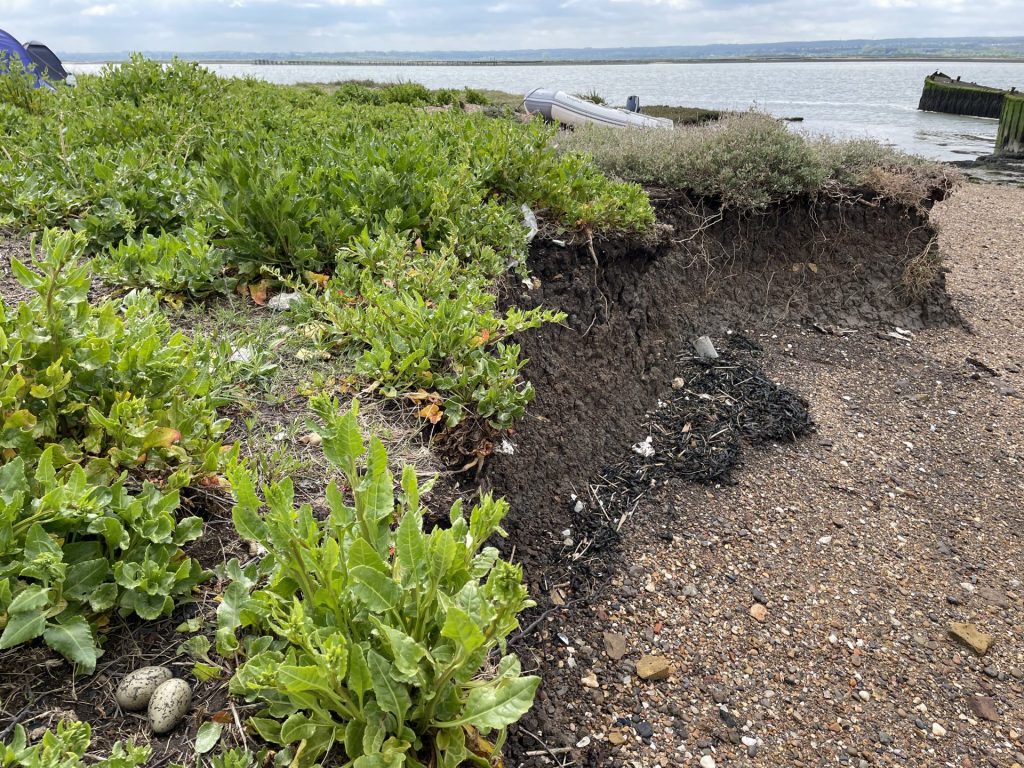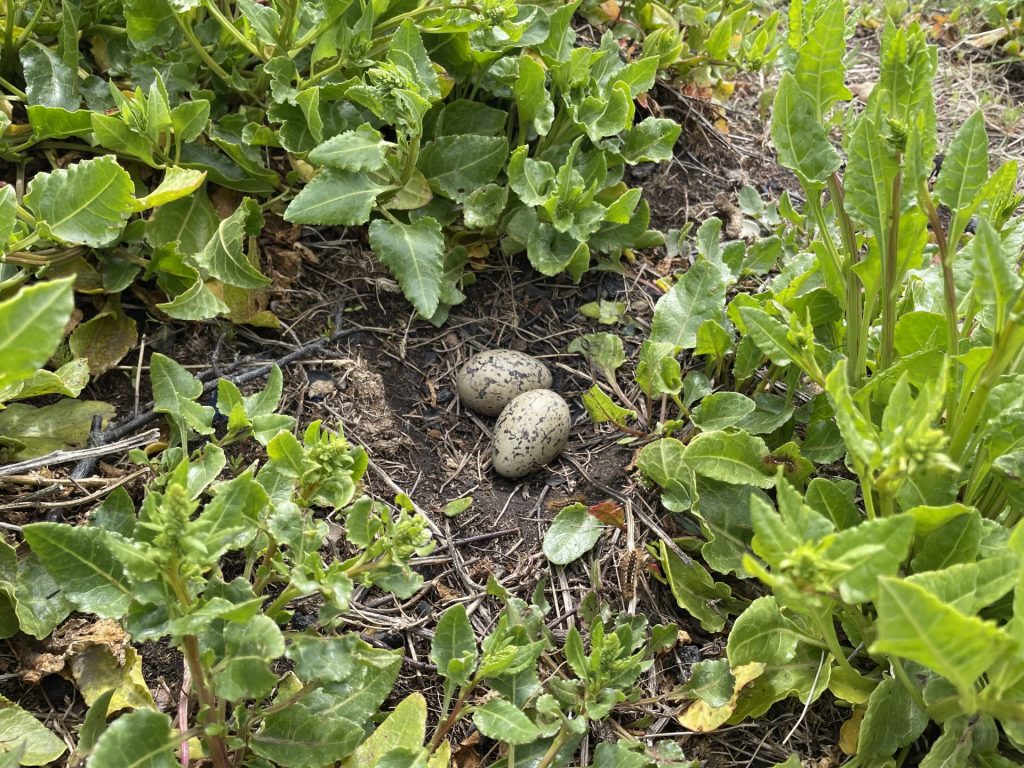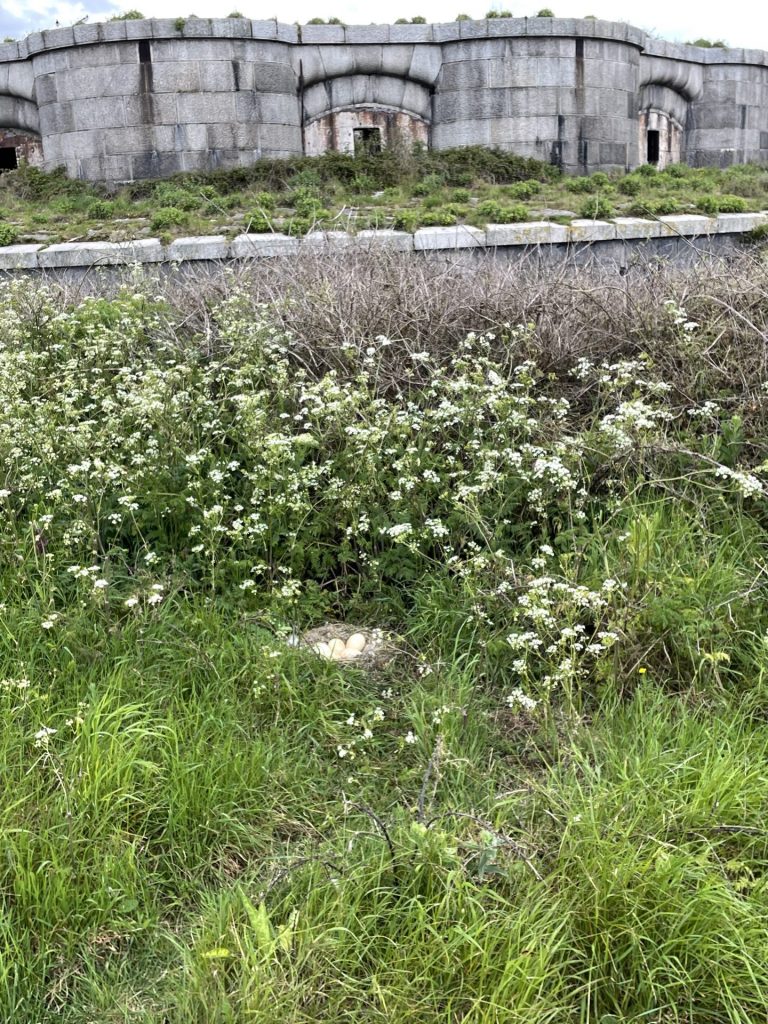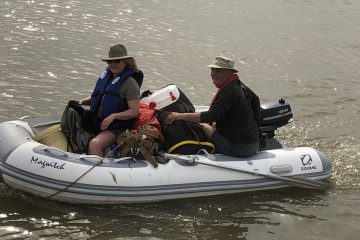Nests in Peril on the Sea (and land)
I came close to crushing a clutch of herring gull eggs for the second time in eight years today, while Carol and I were exploring the perimeter of the fort on Darnet Island (The first time was on the Beaulieu River in 2013 when I was planning the live-work with nature project that became the Exbury Egg – www.exburyegg.me). I managed (both times) to step away, but I now can’t stop thinking again about the fragility of both these nesting sites and of nature in general, as we bestride the planet in our great size nines.
As sea levels rise and south east England slowly dips into the sea, the lower more remote parts of this and other nearby marshes frequently go under on high spring tides. It was particularly affecting to watch and hear the cries of over 200 pairs of gulls on Bishops Ness off to the east, as today’s flood tide washed through and over their nests. They settled down as the tide went out, but Carol’s more expert view than mine is that they will now have to start again. Yet there are high tides every month and the climate change we create will drive them higher.
Such is the pressure on these poor creatures that they are now nesting on the higher ground more frequently visited by people. What to do about the eggs we found today? They were still warm. Will the adults return? We kept finding more, ever closer to the fort itself and even upon it (we think the oyster catchers have colonised the roof). Should we even be here at all? We need to find a good and effective answer.





